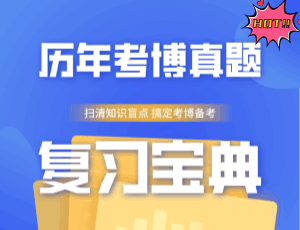2017考博英语翻译平日练习(2)
考博英语翻译部分看起来简单,其实很容易失分,英译汉是肯定不可以直译的需要直译意译互动原则;汉译英则需要意译法以求信、达和地道。新东方在线考博频道整理了2017考博英语翻译平日练习并给出了答案希望考生们根据译文揣摩练习。
Before printing was invented,a scholar had to copy characters one by one if he wanted to publish a new book.During the Northern Song Dynasty, Bi Sheng invented the movable-type printing after many years of experimentation.He engraved the characters on small pieces of clay,and heated them until they became hard movable characters.When print in ga book,people placed the move able characters in order into a whole block and then ran off aprint.After printing, they took the block apart and reused the characters later.This method was both economical and time-saving.China's movable-type printing first spread eastward intoKorea and Japan,then westward into Persia and Egypt,and at last,around the world.The invention of movable-type printing greatly promoted the cultural exchanges among countriesall over the world.
参考翻译
印刷术发明之前,想出版新书的学者必须一字一字地抄写。北宋时期,经过多年的实验,毕昇发明了活字印刷术(movable-type printing)。他把汉字刻在一小块泥胚(pieces of clay)上,加热汉字直到其变成硬的活字。印书时,人们按顺序将活字摆在一起,印出印迹。印刷完后,他们把字分开,以后重复使用。这种方法既经济又省时。中国的活字印刷术首先向东传至朝鲜和日本,之后向西传至波斯(Persia)和埃及,最后传遍全球。活字印刷术的发明大大促进了世界各国的文化交流。
1.印刷术:可译为printing。
2.出版新书:可译为publish a new book。 3.刻:即“雕刻”,可译为engrave。
4.泥胚:可译为pieces of clay。clay意为“黏土,陶土”。 5.按顺序:可译为in order。
6.向东传至朝鲜和日本:可译为spread eastward into Korea and Japan。
考博必备!历年真题及答案
考博精品好课,就选新东方!

 资料下载
资料下载
【必看】考博英语词汇10000例精解
发布时间:2020-09-02关注新东方在线服务号
回复【10000】免费获取
医学考博英语作文核心基础词汇整理
发布时间:2020-04-15关注新东方在线服务号
回复【医学考博】获取
医学考博英语阅读理解练习资料
发布时间:2020-04-15关注新东方在线服务号
回复【医学考博】获取
法学考博英语高频词汇word版
发布时间:2020-04-15关注新东方在线服务号
回复【医学考博】获取
医学博士英语统考真题及解析
发布时间:2019-12-26关注新东方在线服务号
回复【考博真题】获取
全国医学博士外语统一考试真题
发布时间:2019-12-26关注新东方在线服务号
回复【考博真题】获取
中科院考博英语复习备考实战经验分享
发布时间:2019-12-26关注新东方在线服务号
回复【考博经验】获取
中科院考博英语真题练习资料
发布时间:2019-12-26关注新东方在线服务号
回复【考博真题】获取

关注新东方在线服务号
关注新东方在线服务号,
免费获取考博必看干货资料

 推荐阅读
推荐阅读
考博英语写作类型:对立观点式 考博英语是考博中重点考察的科目,想要更好的拿到高分成绩,对于同学来说,大家在实际的备考中,需要更
来源 : 网络 2025-05-14 17:39:10 关键字 : 考博英语写作
考博英语写作类型:反面话题 考博英语是考博中重点考察的科目,想要更好的拿到高分成绩,对于同学来说,大家在实际的备考中,需要更全面
来源 : 网络 2025-05-14 17:38:50 关键字 : 考博英语
考博英语写作类型:反面现象批评型 考博英语是考博中重点考察的科目,想要更好的拿到高分成绩,对于同学来说,大家在实际的备考中,需
来源 : 网络 2025-05-14 17:37:56 关键字 : 考博英语
考博英语写作类型:不同观点列举型 考博英语是考博中重点考察的科目,想要更好的拿到高分成绩,对于同学来说,大家在实际的备考中,需
来源 : 网络 2025-05-14 17:37:35 关键字 : 考博英语
考博英语写作类型:阐述主题型 考博英语是考博中重点考察的科目,想要更好的拿到高分成绩,对于同学来说,大家在实际的备考中,需要更
来源 : 网络 2025-05-14 17:37:17 关键字 : 考博英语写作类型


 考博好课推荐
考博好课推荐
基础薄弱,备考迷茫,送纸质资料
价格 : ¥2280元
资深教师,教学简明,直接有效!
价格 : 0元
 资料下载
资料下载
关注新东方在线服务号
回复【10000】免费获取
关注新东方在线服务号
回复【医学考博】获取
关注新东方在线服务号
回复【医学考博】获取
关注新东方在线服务号
回复【医学考博】获取
关注新东方在线服务号
回复【考博真题】获取
关注新东方在线服务号
回复【考博真题】获取
关注新东方在线服务号
回复【考博经验】获取
关注新东方在线服务号
回复【考博真题】获取

 阅读排行榜
阅读排行榜
 相关内容
相关内容